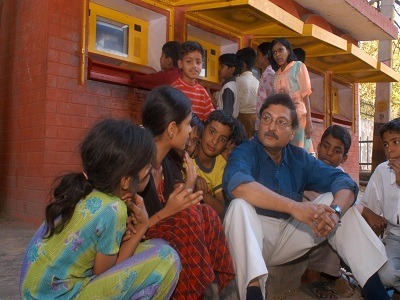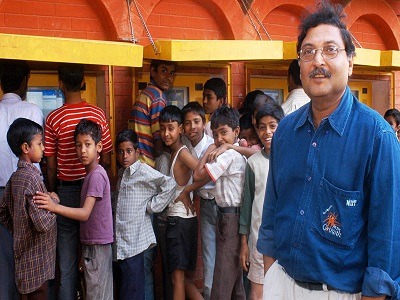By Rositta Liosi – EMTV Online
The Hole in the Wall experiments began in New Delhi in 1999, led by Dr. Sugata Mitra, then Chief Scientist at North India Institute of Technology (NIIT).
Dr. Mitra and his team worked in collaboration with the government of Delhi to carve an opening in a section of a wall adjoining the NIIT campus, placing a computer therein.
A high-powered computer, including a touch pad, was embedded in the wall with high speed internet access and the internet explorer program, and literally, the Hole in the Wall project was born.

This computer was to be used by children living in a slum (known as Kalkaji) adjacent to the NIIT campus, without supervision.
The whole idea behind this was to see if children, who were new to computers, could use the Internet without direction.
Within a month the children at the Kalkaji slum (India) were experts at using computers and logging onto the worldwide web.
A similar set of computers were installed in various parts of Delhi and some even reached other parts of the world in order to see if the results could be duplicated.
The results from these other experiment areas over a period of four years of rigorous research have generated a number of insights.
Such insights include a rapid improvement in various areas of learning and thinking by using the Internet to achieve educational objectives.
An experiment conducted in 2007 involved 26 Tamil speaking 12-year-old children in a South Indian Village.
The aim was to see if these children could teach themselves biotechnology concepts in English, using computers on their own.
Dr. Sugata Mitra, speaking at an official TED conference, told listeners that after two months he returned to the South Indian village. He asked the children “Did you understand anything?”
One girl responded with “apart from the fact that improper replication of the DNA molecule causes genetic disease. We have understood nothing else.”
The children acquired scores of up to 30 per cent in a test to see how much they had learned within the two months.
Their scores further increased to 50 per cent after an additional two months, which are scores that children in posh New Delhi schools with trained biotechnology teachers were getting.

The success of the experiment had become inspiration to an Indian diplomat, Vikas Swarup, who penned the book which was adapted to the big screen as Slumdog Millionaire.
Swarup stated in an interview that “These were the children who couldn’t read and speak English but they were logging on to the worldwide web.”
Remarkably, the hole in the wall experiment has been so successful that 14 years after the project took off, Dr. Mitra has been awarded a US$ 1 million grant by non-profit organisation TED, to further his innovation.
Watch Dr. Sugata Mitra’s present his findings from the Hole in the Wall Project at the Ted Conference.


